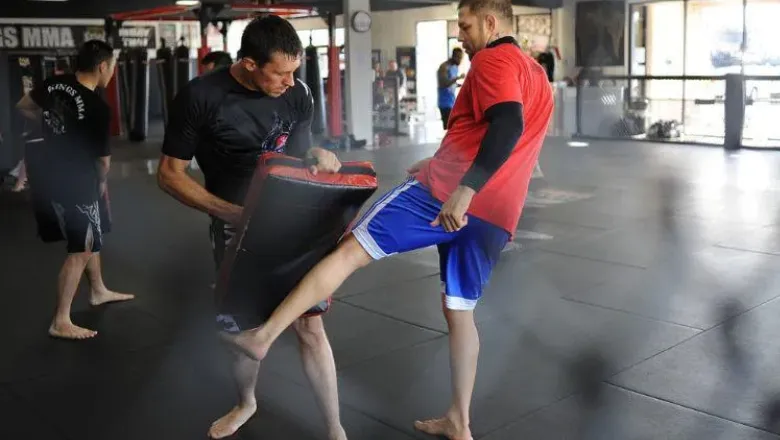“In this work we attempted to quantify the number of fibres transferred between people during an interpersonal fight, with the aim to help the criminal investigation of assault cases and the forensic interpretation or related findings. For the simulation of the fights, we asked a Ju Jitsu team to help. This is certainly an unusual and interesting methodology to carry out this type of research, that has never been used before. Whilst we have been the first to publish this research, other groups are implementing similar methodologies in this area, which is promising for increasing our knowledge of fibre transfers and the practical uses for forensic professionals.”
Dr Matteo Gallidabino, Lecturer in Forensic Chemistry
12 June 2023
Jiu Jitsu team tests fibres transfers in mock assaults
Academics at King’s College London and Northumbria University have examined how many clothing fibres transferred between victim and assailant during mock physical attacks and used a Jiu Jitsu team to test it out.

When a person is physically attacked by another, clothing fibres are transferred onto each other’s clothing. Understanding how often this happens as well as the number of fibres transferred during assaults can be helpful for criminal cases, but little is currently known about this transfer or its potential.
This study involved different assault activities were simulated by a Jiu Jitsu team and participants took on the roles of an aggressive ‘assailant’ versus a defensive ‘victim’, wearing cotton clothing. The Jiu Jitsu team acted out four scenarios with varying intensity levels of physical assault (low and high) and duration times (30 and 60 seconds). The researchers found that between 1,000 to 44,000 fibres were cross-transferred between the Jiu Jitsu team’s clothes during these activities, with notable differences in the scenarios.
This is the first time this type of methodology has been used for assessing the number of fibres transferred between actors in assault activities. As the work aimed to simulate real assaults, the results may help practitioners and experts when assessing evidence and interpreting findings in casework.
“Primarily, what this has demonstrated is that the sheer quantity of fibres found to transfer are far greater than anything previously published. We hope that using these realistic scenarios will help to inform expectations during the evaluation of fibre evidence.”
Dr Kelly Sheridan, Assistant Professor of Forensic Science in Northumbria’s Department of Applied Sciences
“We expect the work to have a big impact in forensic examination of fibre evidence, especially the results have revealed larger amounts of fibres transferred than previous studies have shown. However, as this work aimed at an actual simulation of a fight rather than a small case experiment, we are confident that these figures are closer to those in real situation and may provide a more accurate idea to forensic scientists to assess actual cases. While previous studies have helped establish a baseline for knowledge on the mechanism behind fibre transfer, few works have attempted to recreate the live activities that would enable fibre transfer to take place. Because of this, the interpretation of findings is currently largely left to the expert experience. We tried to bring a more objective body of data into the arena, to make this process more transparent.”
Dr Matteo Gallidabino, Lecturer in Forensic Chemistry
The paper, A quantitative assessment of the extent and distribution of textile fibre transfer to persons involved in physical assault, has been accepted and is available as pre-proof online on Science and Justice.

